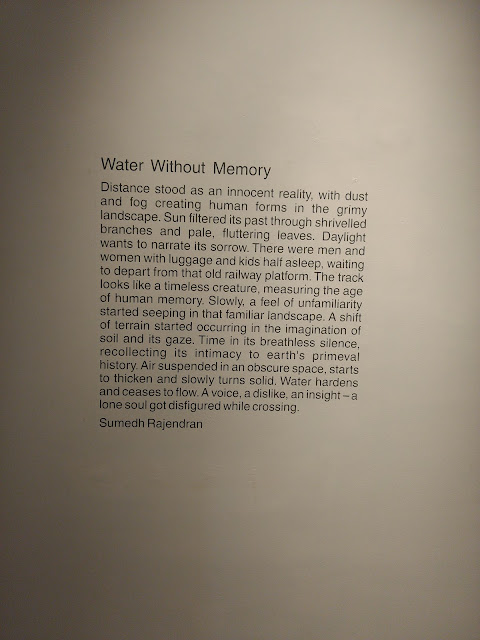Tyres, Nails and Nozzles
The overwhelming greyness of Kaushik Saha’s landscapes in Order of the Age at Galerie Mirchandani+Steinruecke, Mumbai, from the 5th of October to the 4th of November carries a lament for the side-effects of development and modernity. . Vast patches of human-operated natural territories get framed onto Saha’s canvases by means of flattened tyres.. In seeing his artworks, the viewer can imagine resource-rich landscapes of oil fields, coal mines or stone quarries that have driven the nation’s development, but have also been sites of exploitation of labour and land. The narratives of development are mirrored onto the lives of materials that go on to occupy and lend meaning to these landscapes. In juxtaposing these surfaces with iron nails,metal nozzles and delicate scenes of everyday life, a unique commentary on the state of development emerges in Saha’s artworks.
Saha’s work can be experienced and understood in various proximities. The abstract compositions soon begin to disintegrate into different textures and narratives over a prolonged gaze. On going closer, one is able to observe strange activities in these obscure landscapes. As one steps back, a layer of invisibly inscribed words and letters – almost like a substructure of survey, information and data that not only regulates but also establishes repression – becomes apparent. Narrative subjects within Saha’s artworks are thus entrapped within both – the physical geography of the terrain as well as the virtual bounds of infrastructure. His experiments leave the viewer to imagine the grim futures of a leftover landscape after its intensive extraction and exploitation.
--

published in Art India, January 2018
The overwhelming greyness of Kaushik Saha’s landscapes in Order of the Age at Galerie Mirchandani+Steinruecke, Mumbai, from the 5th of October to the 4th of November carries a lament for the side-effects of development and modernity. . Vast patches of human-operated natural territories get framed onto Saha’s canvases by means of flattened tyres.. In seeing his artworks, the viewer can imagine resource-rich landscapes of oil fields, coal mines or stone quarries that have driven the nation’s development, but have also been sites of exploitation of labour and land. The narratives of development are mirrored onto the lives of materials that go on to occupy and lend meaning to these landscapes. In juxtaposing these surfaces with iron nails,metal nozzles and delicate scenes of everyday life, a unique commentary on the state of development emerges in Saha’s artworks.
Saha’s work can be experienced and understood in various proximities. The abstract compositions soon begin to disintegrate into different textures and narratives over a prolonged gaze. On going closer, one is able to observe strange activities in these obscure landscapes. As one steps back, a layer of invisibly inscribed words and letters – almost like a substructure of survey, information and data that not only regulates but also establishes repression – becomes apparent. Narrative subjects within Saha’s artworks are thus entrapped within both – the physical geography of the terrain as well as the virtual bounds of infrastructure. His experiments leave the viewer to imagine the grim futures of a leftover landscape after its intensive extraction and exploitation.


















































